Understanding Exclusive-NOR Gate – A Complete Tutorial
What is Exclusive-NOR Gate?
Exclusive-NOR, generally referred to as XNOR is the inversion of XOR gate. Fundamentally, an Exclusive-NOR Gate is formed by the joining of an Exclusive-OR gate with the NOT gate, known as a hybrid gate. However, its truth table is similar to that of NOR Gate.
It means that it will be at logic 1 when both of its inputs are at the same state, either 0 and 0 or 1 and 1. It means that the inputs of this gate must be equivalent to each other for the gate terminal to give HIGH output. This is the reason that XNOR Gate is also called an equivalence gate. As soon as any of the input goes LOW, the gate also gives LOW output.
Symbol of Ex-NOR Gate and its Boolean Expression
According to IEEE (Institute of Electrical and Electronics Engineers) standards, the XNOR gate is represented as:
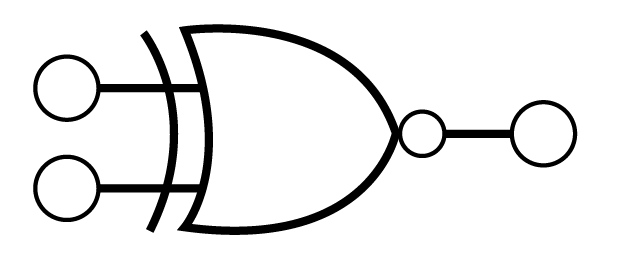
It can be seen that the logic symbol of XNOR Gate is XOR Gate with an inversion bubble (ο) which shows NOT gate. Therefore, it is established that XNOR Gate is the inversion of the XOR Gate.
Boolean Expression of XNOR Gate is written as:

How is Ex-NOR Gate made?
There are multiple ways of making an Ex-NOR Gate by using several other gates. It can be used by combining NOR Gates, NAND Gates, and NAND and OR Gates. It is also possible to make XNOR Gate by joining NAND, AND, and OR Gates, but it is not feasible because it becomes costly.
Through NOR Gates
For making XNOR Gate through NOR Gates, four NOR gates are required. Input A and B are fed into the first NOR Gate. The second and Third NOR Gate take A and B as their first inputs respectively, and the output of the first NOR Gate is their second input. The outputs of the next two NOR gates serve as input for the fourth NOR Gate. Hence, the answer to the expression Q is the final output state of the XNOR Gate.
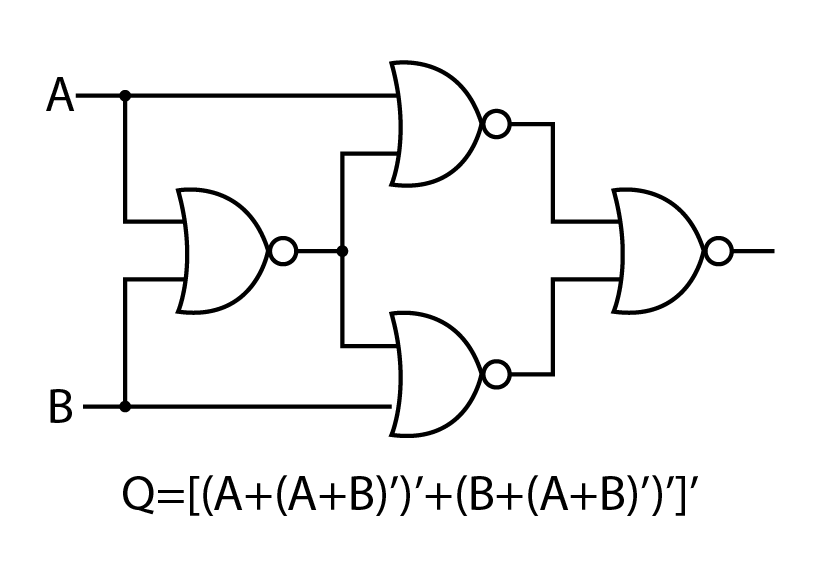
Through NAND Gates
Five NAND Gates are used to make one XNOR Gate. The configuration used for making XNOR Gate through NAND Gates is similar to that of NOR Gates, except for an extra NAND Gate whose inputs are the output of the fourth NAND Gate.

Through NAND and NOR Gates
This is the most economical way of making XNOR Gate as it uses only 3 Gates, in contrast to four and five in the above two cases. This strategy uses two NAND and one NOR Gate Input A and B are given to NOR and NAND Gate and their outputs become the input of the second NAND Gate giving Q as output for the XNOR Gate.
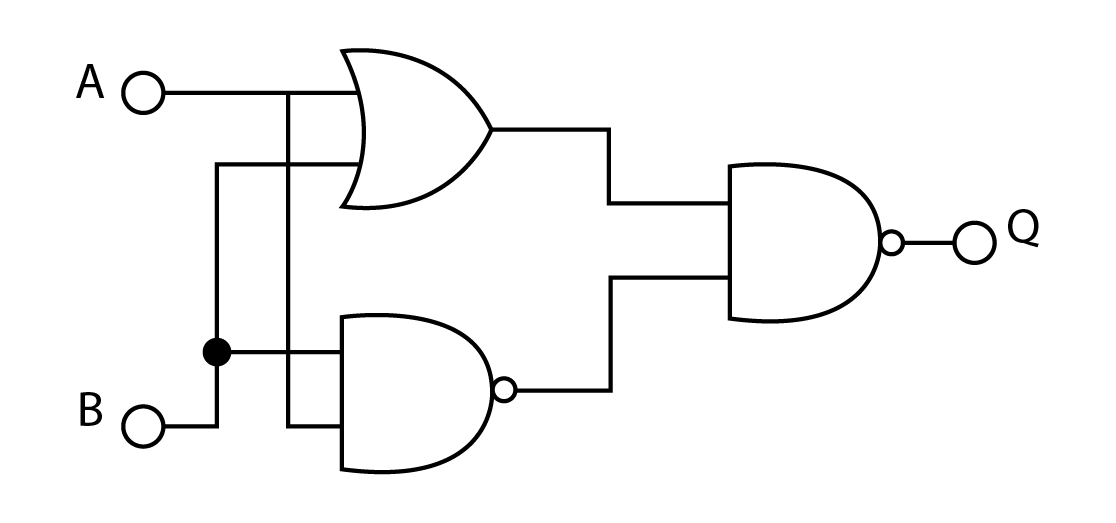
Types of Ex-NOR Gate
There are two types of XNOR gates based on the number of inputs. One type has two inputs, while the other has three inputs.
Two Input XNOR Gate
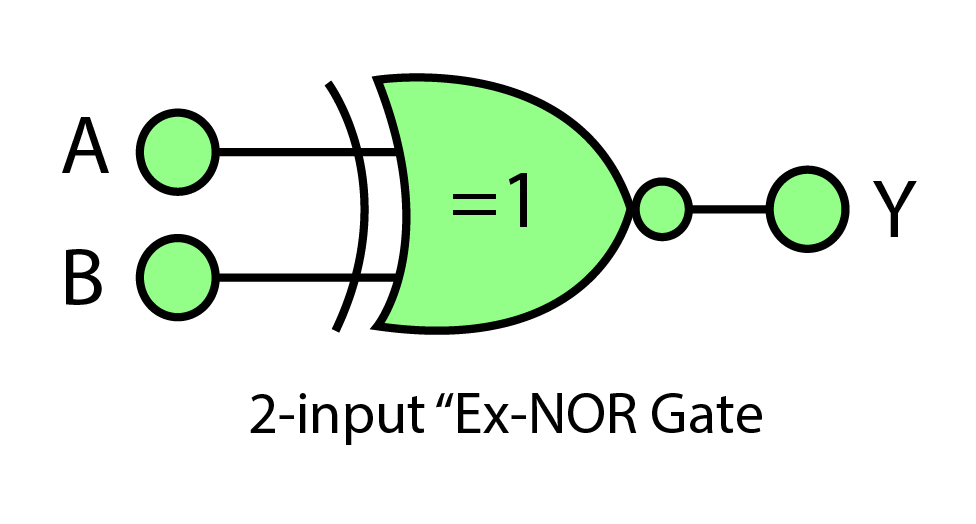
Truth Table of Two Input XNOR Gate
| A | B | Y |
|---|---|---|
| 0 | 0 | 1 |
| 0 | 1 | 0 |
| 1 | 0 | 0 |
| 1 | 1 | 1 |

Three Input XNOR Gate
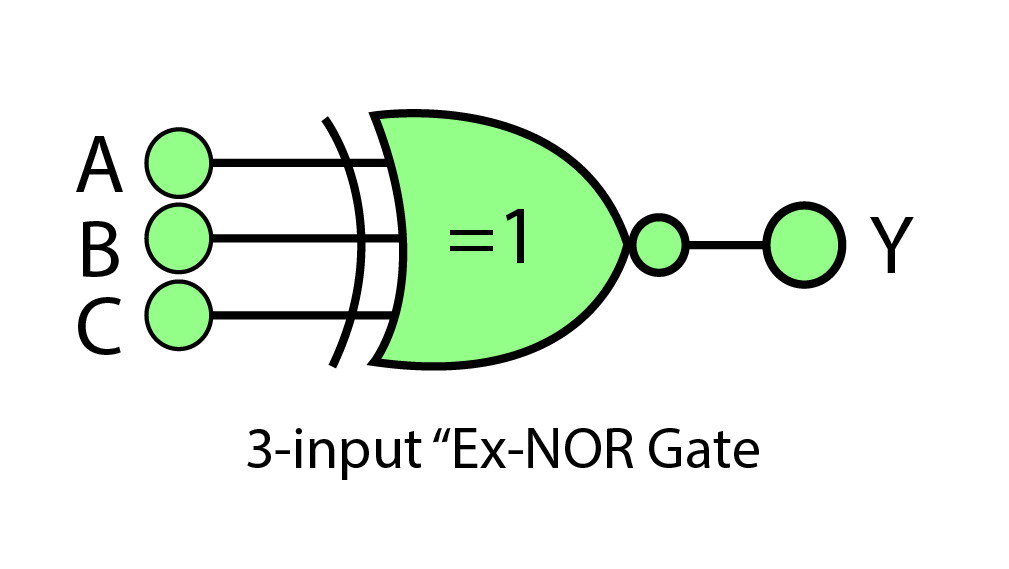
Truth Table of Three Input XNOR Gate
| A | B | C | Y |
|---|---|---|---|
| 0 | 0 | 0 | 1 |
| 0 | 0 | 1 | 0 |
| 0 | 1 | 0 | 0 |
| 0 | 1 | 1 | 1 |
| 1 | 0 | 0 | 0 |
| 1 | 0 | 1 | 1 |
| 1 | 1 | 0 | 1 |
| 1 | 1 | 1 | 0 |

Applications of XNOR Gate
The XNOR gate has several useful applications. It is used to make an adder (half adder, full adder), subtractor, and most of the time as a parity checker. As a parity checker, it detects errors in digital electronics circuits. When combined with XOR Gate, it is used in circuits that are power savvy. Furthermore, it is used in heat or fire alarms, burglar alarms, calculators, digital circuits, and computers.
Conclusion
XNOR gate is one of the useful gates that has diverse applications in the field of digital electronics. Its specialty is its equivalence. It gives HIGH output when essentially two of its inputs are in the same state. It is used in the Digital Logic Design of adders and parity checkers. It also works as a comparator in certain circuits.
Source: linuxhint.com
